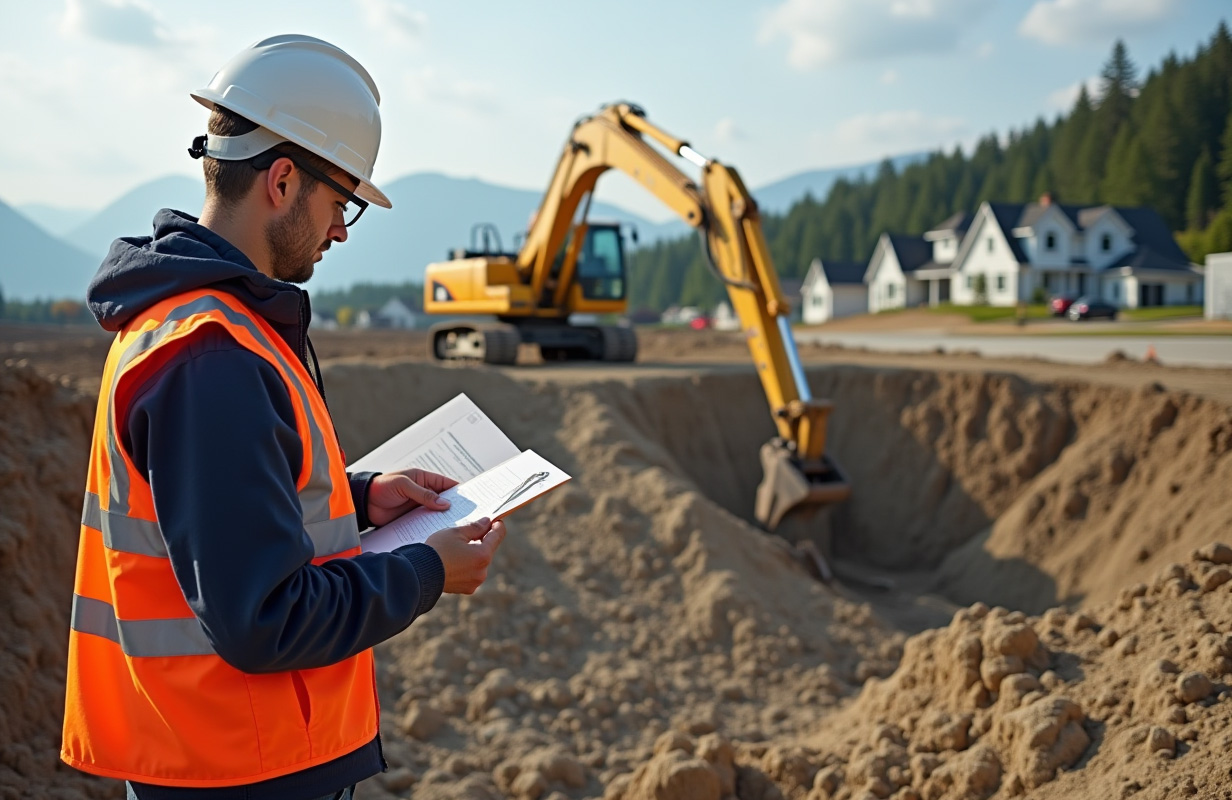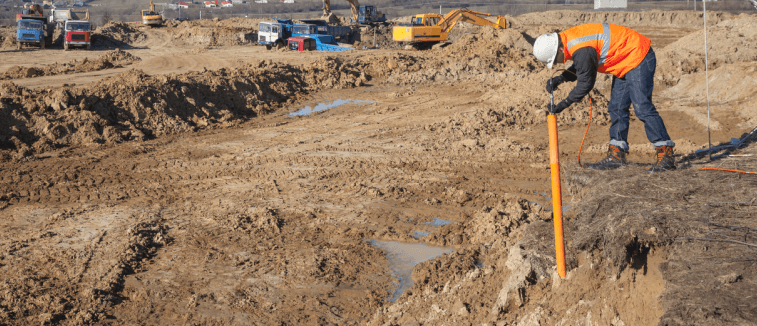A Thorough Review of Geotechnical Design Techniques and Their Influence On Modern Civil Design Projects
Geotechnical engineering serves as the foundation of modern-day civil design, supplying crucial methods that resolve the complexities of subsurface problems. The interplay of dirt analysis, structure layout, and innovative modern technologies forms the stability and sustainability of framework jobs.
Importance of Geotechnical Engineering
Geotechnical engineering works as a vital structure for civil design projects, influencing the security and stability of frameworks. This discipline focuses on the behavior of soil and rock materials, providing necessary insights that assist the design and building and construction procedures. By comprehending the communication in between the earth and engineered frameworks, geotechnical engineers can examine threats related to ground conditions, such as settlement, slope security, and liquefaction.
The relevance of geotechnical design expands beyond mere architectural stability; it plays an important function in environmental management and sustainability. Appropriately performed geotechnical analyses make sure that jobs decrease their ecological footprint and conform with regulative needs (all about geotechnical engineering). Moreover, geotechnical engineering is critical in website selection, allowing designers to identify suitable areas for building and construction that mitigate prospective dangers.
On top of that, geotechnical design cultivates advancement in civil design by progressing techniques for ground enhancement, structure layout, and excavation. The self-control's payments are essential in resolving obstacles positioned by differing soil problems, therefore assisting in reliable and secure infrastructure growth. Generally, the value of geotechnical design is vital in ensuring that civil engineering projects are not just feasible yet also durable versus natural and man-made adversities.
Secret Methods in Geotechnical Engineering

Another vital method is dirt stablizing, which entails modifying dirt residential or commercial properties to enhance load-bearing capacity or lower negotiation. Approaches such as including cement, lime, or using geosynthetics are generally used to accomplish soil enhancement.
Ground enhancement strategies, consisting of vibrant compaction and vibro-replacement, are likewise vital. These approaches intend to densify loosened or soft soils, boosting their stamina and decreasing liquefaction possibility in seismic areas.
Preserving structures, such as sheet stacks and soil nailing, are employed to sustain excavations and protect against dirt movement. Slope stablizing strategies, including water drainage systems and preserving walls, are vital for mitigating landslide risks.

Soil Evaluation and Testing Methods
Reliable dirt analysis and screening methods are critical for understanding the chemical and physical homes of dirt, which directly affect design choices. A detailed evaluation of soil features is important for anticipating habits under various loading conditions and environmental impacts.
Typical dirt screening techniques consist of both field and laboratory strategies. Area tests, such as the Requirement Infiltration Examination (SPT) and Cone Infiltration Test (CPT), provide immediate insights into soil toughness, stratification, and thickness. These tests aid designers examine site conditions efficiently before more comprehensive laboratory evaluations.
Research laboratory screening methods, such as Atterberg limitations, grain dimension circulation, and compaction examinations, are vital for establishing soil plasticity, dampness content, and ideal compaction levels. Furthermore, advanced techniques like triaxial tests and combined undrained (CU) examinations offer useful information on shear strength and effective stress and anxiety criteria - geotechnical engineer description.
Chemical testing, consisting of pH, electrical conductivity, and natural web content evaluation, is also essential for understanding prospective soil contamination and its effect on construction materials. Jointly, these soil evaluation and testing techniques form the structure of educated decision-making in geotechnical design, making certain the safety and security of contemporary civil their explanation design tasks.
Structure Layout Approaches
These strategies can be classified into deep and shallow structures, each fit to certain dirt problems and packing circumstances. Shallow structures, such as spread footings and mat structures, are commonly utilized when surface soils have ample bearing capability.
On the other hand, deep foundations, consisting of piles and pierced shafts, are used when surface area soils are inadequate or weak for sustaining the framework. These structures transfer tons to much deeper, a lot more steady soil or rock layers, making them necessary for skyscraper structures and bridges in challenging geotechnical conditions.
Selecting the proper structure design includes detailed geotechnical examinations, including dirt make-up, birthing ability, and groundwater problems. Furthermore, designers need to consider factors such as settlement, lateral lots, and potential seismic task to make sure the structure's performance in time.
Inevitably, a well-executed structure style is a crucial element of civil design, straight affecting the security, toughness, and capability of frameworks. all about geotechnical engineering. By straightening structure kinds with site-specific problems, engineers can effectively mitigate threats connected with foundation failure
Advancements Shaping Civil Engineering

Lasting products, such as high-performance concrete and recycled aggregates, are additionally gaining grip, advertising eco-friendly practices while preserving structural honesty. Additionally, advanced geotechnical techniques, such as ground renovation and deep blending approaches, are improving the stability of foundations in difficult dirt conditions.
Moreover, the usage of drones and remote noticing modern technology is boosting site surveying and keeping track of, offering real-time data that aids in managing building and construction progress and security. The implementation of ingenious construction methods, such as modular and prefabricated construction, additionally speeds up job timelines and minimizes waste. Collectively, these technologies are not just changing civil design techniques yet likewise making certain that contemporary infrastructure fulfills the demands of a growing worldwide populace while attending to environmental issues.
Conclusion
In final thought, geotechnical engineering methods are integral to the success of modern civil design jobs. By using these methods, designers can reduce threats and add to the development of resilient city settings, inevitably promoting lasting growth and security in civil engineering methods.
Geotechnical design offers as the backbone of contemporary civil design, offering necessary methods that resolve the intricacies of subsurface conditions.Geotechnical engineering offers as a vital structure for civil design projects, influencing the safety and security and security of frameworks.In enhancement, geotechnical engineering cultivates technology in civil design by advancing methods for ground improvement, structure design, and excavation. Overall, check the value of geotechnical engineering is vital in making sure that civil design tasks are not just viable but additionally resilient against natural and man-made adversities.
In conclusion, geotechnical design techniques are essential to the success of modern civil engineering tasks.
Comments on “Everything You Required to Find Out About Geotechnical Engineering for Your Next Project”